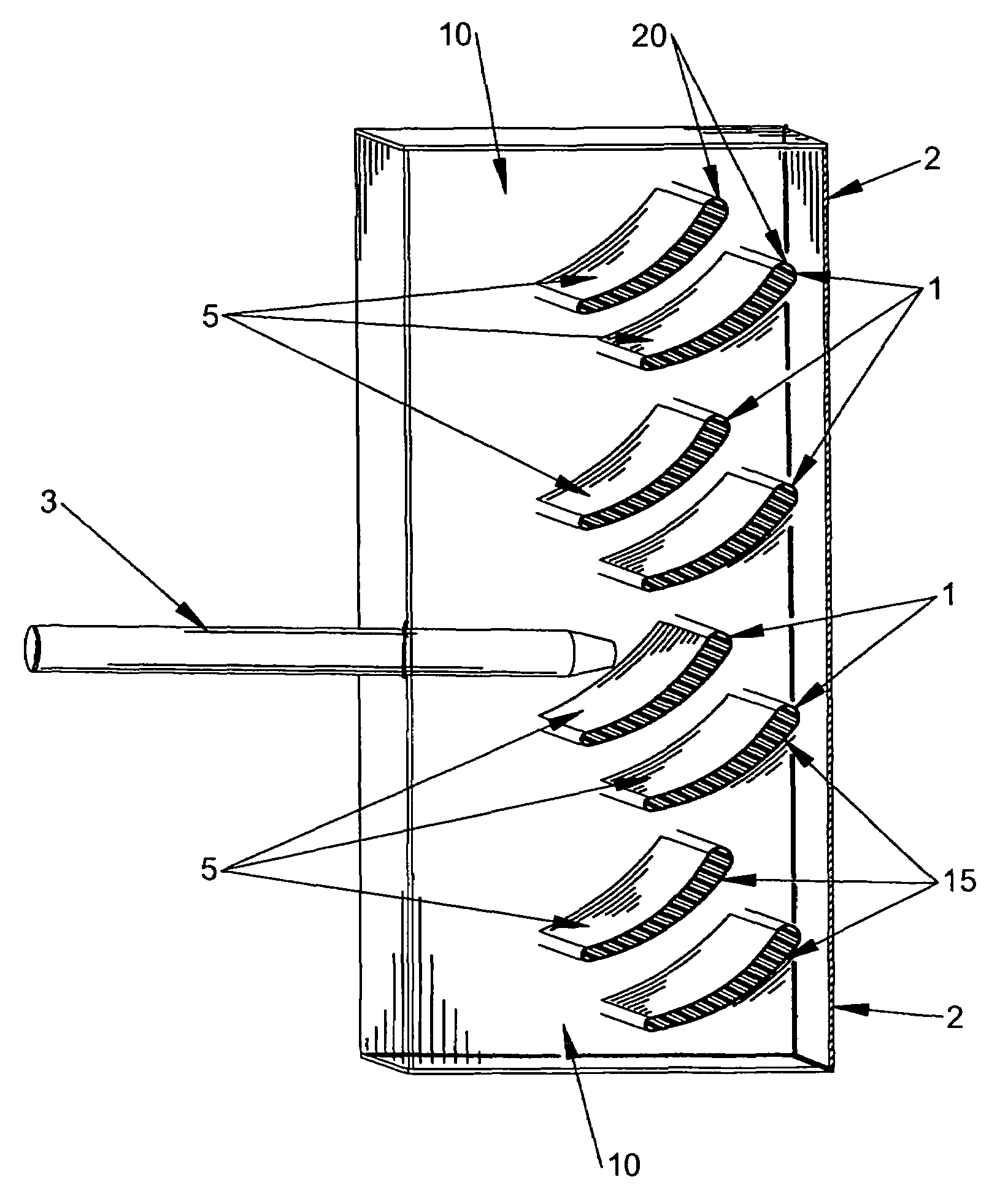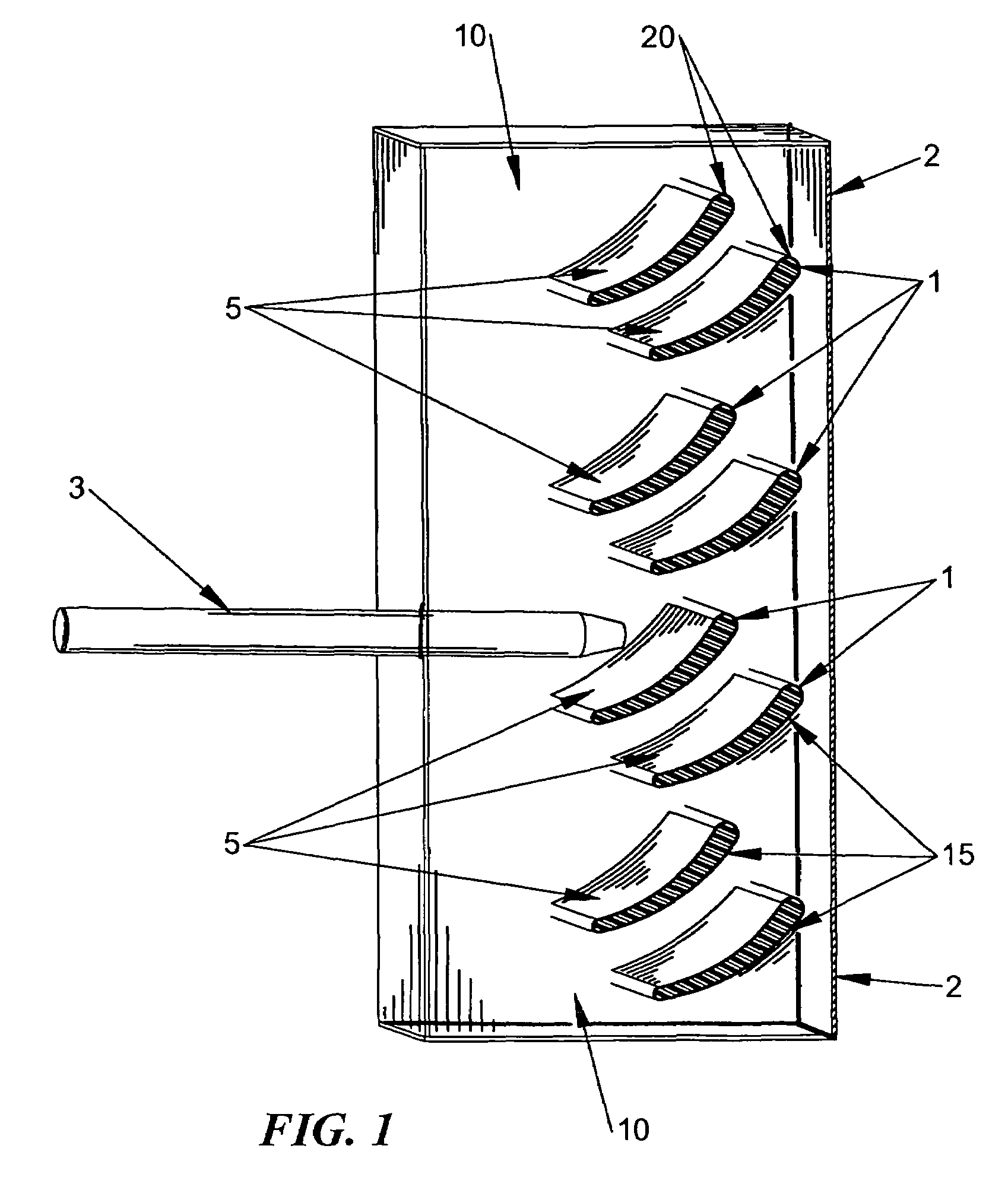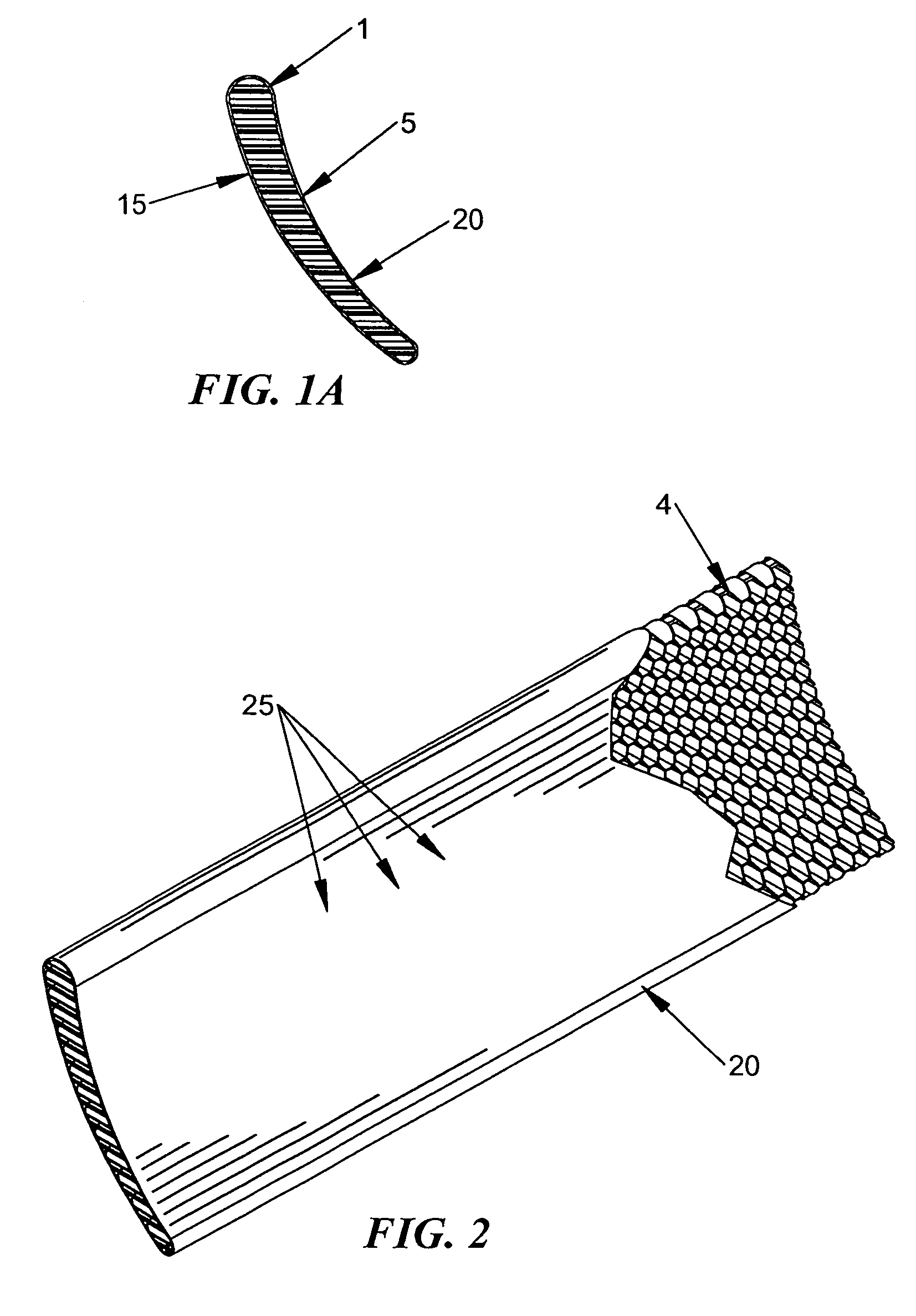Enhanced light weight armor system with reactive properties
a technology of reactive properties and armor systems, applied in reactive armor, protective equipment, weapons, etc., can solve the problem that no lightweight armor structure can protect using the same techniques
- Summary
- Abstract
- Description
- Claims
- Application Information
AI Technical Summary
Benefits of technology
Problems solved by technology
Method used
Image
Examples
Embodiment Construction
[0036]One of the limitations of lightweight armor is that by its very nature it has a low capacity to absorb and dissipate large amounts of heat and kinetic energy. Shaped-charge and high-explosive fragmenting weapons produce both high heat and high kinetic energy. As the charge or fragments slide along or penetrate the armor along the path 3 some of the kinetic energy is converted into heat, melting or vaporizing the impacted armor materials. It is preferable to deflect the jet stream or fragments rather than attempting to stop it. Current ceramic armor systems that are most effective utilize sloped plates to accomplish this. Ceramics can withstand the high energy loads, but they are heavy and brittle.
[0037]The invention utilizes a complementary mixture of materials to provide greater thermal capacity and friction resistance to thin metallic outer sheets used to construct lightweight deflecting armor components. Referring to FIG. 1, the invention consists of multiple layers of alum...
PUM
 Login to View More
Login to View More Abstract
Description
Claims
Application Information
 Login to View More
Login to View More - R&D
- Intellectual Property
- Life Sciences
- Materials
- Tech Scout
- Unparalleled Data Quality
- Higher Quality Content
- 60% Fewer Hallucinations
Browse by: Latest US Patents, China's latest patents, Technical Efficacy Thesaurus, Application Domain, Technology Topic, Popular Technical Reports.
© 2025 PatSnap. All rights reserved.Legal|Privacy policy|Modern Slavery Act Transparency Statement|Sitemap|About US| Contact US: help@patsnap.com



